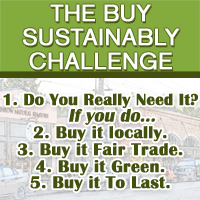Last year I took an Animal Law class at my local community college, and there I learned that before 50 years ago there were no such things as “factory farms” – farmers were small operations that couldn’t possibly take care of tens of thousands of cattle and bring them to market. Back then, farming was more humane to animals and the environment wasn’t as badly affected because tons of fertilizer and pesticides and antibiotics were not needed to keep thousands of animals relatively healthy enough to get to market. Here’s a great link on the environmental effects of factory farming: Farm Sanctuary’s “Environmental Impact of Factory Farming.”
After World War II, it seems everything changed. Industrial farming became more and more the norm and something I’ve recently learned about, The Chemical Revolution, occurred. Take a look, 50 years ago, DuPont’s slogan was Better Things for Better Living…Through Chemistry.”
“The dawn of the chemical age followed quickly on the heels of World War II, instigated by war-related research and a host of ‘new and improved’ products like chemical cleaners, plastics, and disposable goods that quickly became symbols of American prosperity and modern luxury . . . Vinegar and soap were out, chlorine and synthetic, petroleum-based detergents were in. The modern marvel of petro-chemical wonders made domestic chores a breeze. Who needs elbow grease when chemicals will do the work for you?” — Easy Green Living by Renee Loux, p. 50
Now I’m not saying chemistry is bad, or rather, that all chemistry is bad. Hell no, I still use a lot of plastic, take medication everyday and live the life of a 21st century woman (despite my desire not to at times).
But the fact of the matter is that before the chemical revolution, household cleaners included ingredients like white vinegar, good old-fashioned plain baking soda, and the love of my life lately, pure castile soap. They couldn’t even have imagined things like Triethanolamine (TEA), Phenols, or tongue twisters like Alkyl dimethylbenzyl ammonium chloride (also known as quatenary ammonium compoound).
Don’t get me wrong, these chemicals are “modern miracles” – they clean and disinfect really well and leave being a scent that to us just screams “clean” – but almost all of them are absolutely toxic to both you and the environment. There’s a reason why many cleaners don’t list ingredients on their containers – who likes to read a huge list of multi-syllable names of things they’re putting on their kitchen counters or table?
The problem is, this stuff has only been around for the last 50 or so years. Vinegar and baking soda have been around for millenia. While we may think that we’ve been cleaning with these things for years and have never been affected, keep in mind, we don’t have more than one generation (really starting with the baby boomers) that has been in contact with these chemicals their entire lives. Who knows what this stuff is doing to us?
Have you ever been overcome by cleaning fumes, gotten a rash by coming into contact with some cleaning supply, or a bad headache from inhaling some chemical? All of that shows that that stuff is just not good for us.
So I set forth this challenge for you, to look for cleaning supplies at the store that contain ALL their ingredients ON the bottle. In the future I plan on posting my favorite green cleaning “recipes” – and all of them contain items we all know and can say in one breath:
- soap
- baking soda
- salt
- vinegar
- washing soda
- alcohol (yay vodka!)
- and cornstarch.
You’ll be amazed at what you can clean.
Filed under: Green Living | Tagged: animal law, baking soda, chemical revolution, factory farm, green cleaning, petroleum-based detergent, vinegar | 1 Comment »




